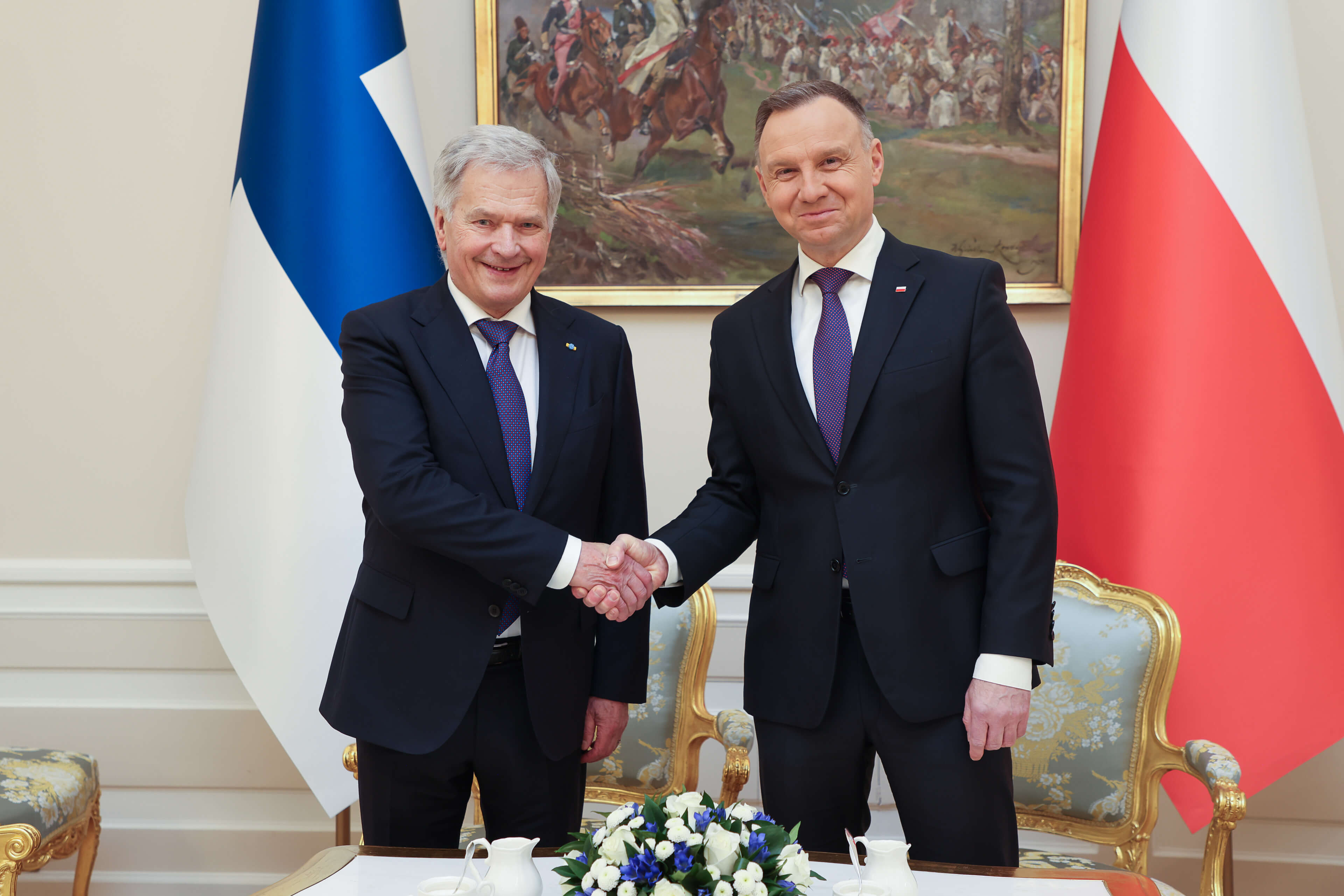Sauli Niinistö, the president of Finland, visited Poland at the beginning of the week to gain know-how related to handling the recent surge of refugees from the east since Poland has a rich two-year experience.
Finland seems to be ready to meet the sudden pressure of hundreds of migrants who want to enter Finland from Russia. The principal countries from which asylum seekers originate are Iraq, Yemen, Syria and Somalia. However, they were unable to cross into Finland.
The government in Helsinki has reasons to believe that the sudden influx of migrants from Russia at the 1,300-kilometer-long border is the result of Russian pressure - that is, Moscow's decision to direct them towards the Finnish border. They have already done this to other neighbouring countries they consider enemies.
Until now, Russian authorities have mostly detained migrants from the Middle East on their territory if they did not have the documents or fulfilled conditions to enter the EU, but that practice changed last week.
“I don’t see the border traffic ending in any other way than with very clear Finnish action”, said President Niinistö, explaining the closure of border crossings to Russia.
Russia’s revenge
Weaponising migrants to pressure Finland comes as a direct consequence of the recently concluded Finnish-US negotiations on the Defence Cooperation Agreement (DCA).
On October 31, after more than a year of negotiations, the 2 countries reached an agreement directing it to political decision-making, which practically means the finalisation of Finland's crucial security agreement with the largest NATO member.
Russia's desire to retaliate and take revenge on Finland for joining NATO has not stopped since the start of the Russian aggression against Ukraine
If this "triggered the situation", as the Finnish president said, Russia's desire to retaliate and take revenge on Finland for joining NATO has not stopped since the start of the Russian aggression against Ukraine.
However, Moscow has never been able to implement its threats of a "harsh response" to Finland's intention to join NATO, particularly since it became a full member this year.
Russia only has hybrid operations left, part of which is directing a large number of migrants towards the borders of Finland, in which, according to the media, state security services, such as the FSB, also participate.
Regardless of the Kremlin’s denying involvement, the Finnish authorities have reacted under the belief that they need to defend against subversion, which they demonstrated by closing the 4 most frequent border crossings with Russia to the entry of asylum seekers.
Deepening divisions in the West
Moscow's action also fits into its broader strategy of encouraging existing divisions in countries it considers enemies, and Finland is definitely one of them, as a new NATO member.
The issue of migrants is one of the more complex in Finnish politics. The new right-wing government of Prime Minister Petteri Orpo has been making moves regarding a harsher regime for undocumented asylum seekers.
The government reversed legislation passed under the previous Social Democratic government of Prime Minister Sanna Marin, which required local authorities to provide free essential health care to undocumented migrants as long as they are in the country.
The new law removes that obligation and leaves local governments to decide for themselves whether and how long illegal migrants would enjoy access to the public healthcare system.
 Polish President Andrzej Duda promised Finnish President Sauli Niinistö political and advisory support in dealing with the migrant challenge on the border with Russia
Polish President Andrzej Duda promised Finnish President Sauli Niinistö political and advisory support in dealing with the migrant challenge on the border with Russia
In this respect, Moscow's idea was to deepen the already existing and adverse political debate in Finland by pushing illegal migration to the border crossings and, perhaps, in the next step, to destabilise the government of the newly admitted NATO member.
Also, from Moscow’s point of view, forcing a harsh Finnish response at the border crossings is an attempt to intensify already existing political conflicts within the EU regarding the treatment of illegal migrants in the absence of a single European border regime.
Valuable experience of Poland
Last Monday, Polish President Andrzej Duda promised Finnish President Sauli Niinistö political and advisory support in dealing with the migrant challenge on the border with Russia.
Two years ago, Poland was the first country to be faced with this kind of "hybrid attack" (Duda) when thousands of migrants suddenly rushed to its borders from the territory of neighbouring Belarus, Moscow's closest ally.
Warsaw reacted harshly, building high barriers along its border and preventing migrants from entering, even with the use of force, making its right-wing government often the target of criticism from some European partners.
Having learned from that experience, the Finnish government is reacting the same way, for now, because the pressure pattern is clearly repeating itself. This makes it difficult for EU critics of Finland to make the same accusations against it as they did against Poland.
Russia has exploited Middle Eastern migrants once more to exert political and security pressure on "enemy" countries in the neighbourhood. This is probably also the case regarding Finland but without particular effect.